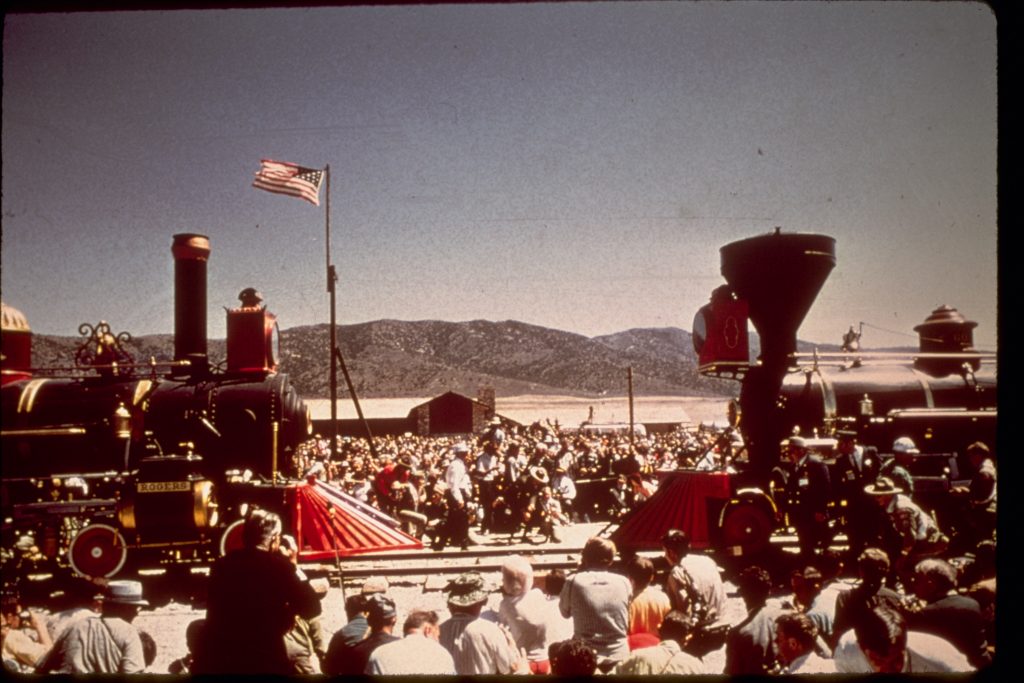Can you “train” your brain to figure out what landmark event happened exactly 150 years ago?

A huge moment in American history
Recently, around 20,000 people descended on Promontory Summit, a remote bluff about 70 miles northwest of Salt Lake City. The reason: To commemorate a huge moment in American history. It’s the setting of the Golden Spike National Historic Park, set aside as a landmark because on May 10, 1869, it’s where America’s first Transcontinental Railroad was completed. For the first time, the entire continent, from coast to coast, was joined by rail. Symbolically, it marks American ingenuity conquering the frontier, and people and goods could move from one side of the country to another in about a week (down from about three months via older methods).
The original ceremony
At the original Golden Spike ceremony, the Central Pacific Railroad (from the west, heading east) formally joined up with the Union Pacific Railroad (from the east, heading west). The two lines’ tracks converged and were connected with a 17.6-karat gold railroad spike. (After all the photo ops, it was promptly removed, replaced with a regular iron spike, and it’s now on display at the Utah State Capitol.) More than 3,000 people attended that day, and so did two big steam engines. Event planners lined up Central Pacific’s No. 60 Jupiter and Union Pacific’s No. 119 nose to nose at the point of union.
Unification of a country
Why was this so important? Well, not only did it mean huge advancements in transport and shipping, but it was a source of national pride — a literal and symbolic unification of a country just four years after the Civil War tore it in two. Of course, the Transcontinental Railroad wasn’t good news for everyone — it sped up European settlement of the western U.S., displacing scores of Native Americans and quickened the demise of bison and buffalo populations.
The current ceremony
About 3,000 people attended the first Golden Spike ceremony, far less than this years turnout. Spectators got to see a re-enactment of the event, including the arrival of two replica Central Pacific and Union Pacific trains. And unlike those present in 1869, they got to see a musical about the Golden Spike, prepared just for the occasion.







